2014 Program Facts
2014 Program Facts
What needs has Del Mar College identified for its Capital Improvement Program?
Del Mar College’s mission includes preparing the workforce to support the Eagle Ford Shale and other industries in the Coastal Bend. Businesses and industries employ the graduates Del Mar College educates in welding, petroleum processing, industrial machining, aviation maintenance, engineering and construction trades technologies as well as business, computer science, health science and public safety.
Is Del Mar College proposing a bond election in November 2014?
On July 8, 2014, the Board of Regents approved calling for a $157 million bond proposal. The College’s last taxpayer-supported bond was in 2003 and was completed on time and on budget.
How much money is involved?
As a result of two years of preparation, Del Mar College identified needs for the East and West campuses and planning a future Southside expansion. This bond proposal will cover $157 million of those identified needs.
If approved, what could the 2014 bond cost me?
Residents 65 years of age and older and the disabled, already exempted from property taxes, will pay no increased taxes. For those not exempted, the tax impact is projected at $2.10 per month or $25.15 per year on a $100,000 home.
A tax increase of 2.5¢ per $100 ($0.02515 per $100) of home valuation is projected. Debt Service tax increases are not expected to start until 2016 and will be incremental through 2020. Del Mar College projects the ad valorem tax rate increase will remain at or below 0.02515¢ per $100 taxable assessed property valuation per year for the duration of this bond, based on current appraisal values and regional economic projections.
Why would the College need local taxpayer support for a bond?
Texas community colleges receive no state or federal funding to build or maintain campus buildings and grounds.
When could we see results from this CIP?
If the voters approve a bond proposal in November, new facilities could be ready by the 2018-2019 academic year. Some repairs and renovations could begin in 2015.
What is included in the Capital Improvement Program?
To serve the 15,000-student population established by the state as Del Mar College’s target for achieving “Closing the Gaps” goals in the next decade, the College started planning this Capital Improvement Program in 2012. The CIP envisions providing academic core courses, workforce technology laboratories, developmental education, early college, dual credit, student support and library services at each campus.
The entire Capital Improvement Program identified more than $397 million in total facilities needs. The 2014 bond is expected to cover $157 million of those needs for the next ten years.
EAST CAMPUS:
- New facilities for general academic courses in English, math, social science and other transfer classes
- Phase II of Music to accommodate one of the College’s three nationally-accredited Fine Arts programs
- Repurpose of Heldenfels Administration building as Student Enrollment Center
- Renovation of the Harvin Student Center to accommodate facilities for Campus Life and Veterans Services
- Major repairs and/or renovation for many buildings, some of which were built in the 1940s and 1950s
WEST CAMPUS:
- Technical education and core course classrooms to teach communication and computation skills for nursing, health sciences, public safety, occupational, technical and GED programs
- Additional space for workforce certificate, contract and continuing education programs
- Renovation and expansion of infrastructure
YORKTOWN EXPANSION ON THE SOUTHSIDE:
- Master planning and site maintenance for 95 acres on the corner of Yorktown Boulevard and Rodd Field Road purchased by the College last year
Is Del Mar College financially sound to propose a bond election now?
Standard & Poor’s Ratings Services has assigned Del Mar College a rating of “AA” for 2013-2014 and views the outlook for that rating as “stable.” Fitch Ratings assigned Del Mar College a rating of “AA+” on limited tax refunding bonds and outstanding limited tax bonds and views the outlook for that rating as “stable.”
Del Mar College Background
Del Mar College has educated more than 750,000 residents through credit and noncredit programs since 1935. Nearly 55,000 have earned degrees and certificates preparing them for employment or university transfer.
According to state data, the median income for Del Mar College graduates with a business, professional, technical or occupational degree was $57,221 the first year after they graduate.
Within two years of high school graduation, more than half of all graduates from Carroll, King, Miller, Moody and Ray, Calallen, Flour Bluff, Tuloso-Midway and West Oso High Schools collectively enroll in Del Mar College.
Nine out of ten Del Mar College students come from Nueces County and most stay in the Coastal Bend to live and work after graduation.
The total economic impact of Del Mar College operations, student productivity and spending was more than $715 million last year. For every $1 of public funds invested in Del Mar College, District taxpayers receive $3.20 in cumulative value, according to research conducted by Economic Modeling Specialists International in 2014.
CRO 8-14-14
Page last updated March 26, 2018.


